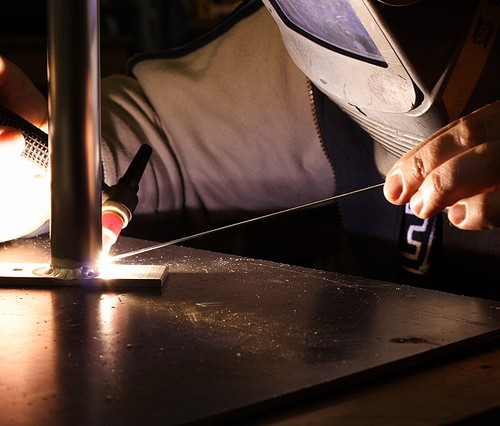
Posted on August-08-2020
This arc welding process involves the formation of an arc between a continuously fed electrode and a workpiece. This creates a blanket of powdered flux, which helps protect the weld zone. During welding, the arc is submerged beneath the flux blanket and it is not usually visible. This type of weld is a well-established method and extremely versatile.
Submerged arc welding, often referred to as ‘SAW’, is normally limited to flat or horizontal-fillet welding positions.
SAW has four common features: a welding head, flux hopper, flux and an electrode. The welding head feeds the flux and the filler metal to the welding joint; this is also where the electrode (e.g. the filler metal) gets energised.
The flux hopper is where the flux is stored and it controls the rate of flux deposition on the welding joint. The flux is the part in which the shields protect the molten weld from atmospheric contamination. This component also cleans the weld metal and can modify its chemical composition.
Lastly, the electrode, or SAW filler material, is a standard wire that can be twisted to give the arc an oscillating movement. This wire helps fuse the weld to the base metal, and its electrode composition is dependent on the material being welded. Generally, electrodes are copper coated; this is to prevent rusting and increase their electrical conductivity.
If you’re looking to buy or hire welding equipment, or for repairs and calibrations, get in touch with our team here at Arc Welding Services. You can give us a call us on 0121 327 2249, or fill out our online contact form and someone will be in touch.